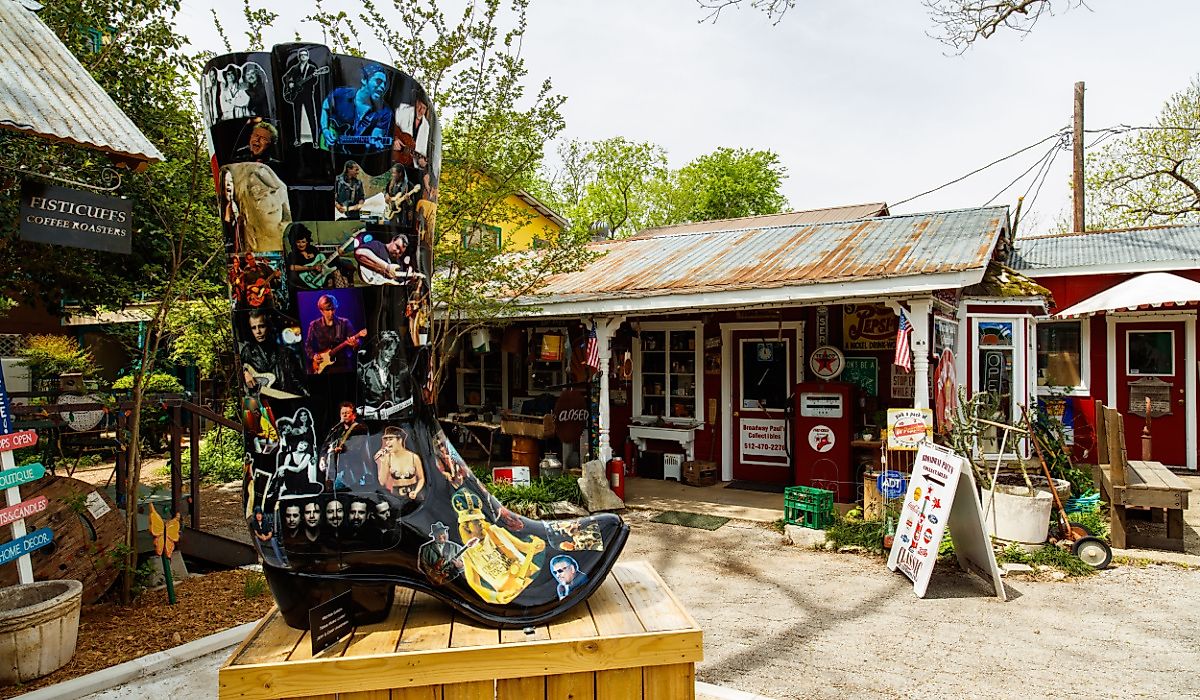
9 Towns in Texas that Transport You to the Past
In a state as vast and varied as Texas, the echoes of the past resonate not just through the halls of museums or the lively streets of its mega-cities, but also in its quieter corners where history is deeply felt. Beyond the shadow of the Alamo and the glam of Houston's skyscrapers lie small towns that are living testaments to the Texas of yesteryears.
Here, old Texas meets new curiosity, where each street, building, and local tale invites you to step back in time and experience the Lone Star State as it once was. From the German influences in Fredericksburg to the outlaw legends of Hico, these nine towns provide more than just a peek into Texas’ historic fabric—they offer a full immersion into the stories that shaped the state.
Jefferson
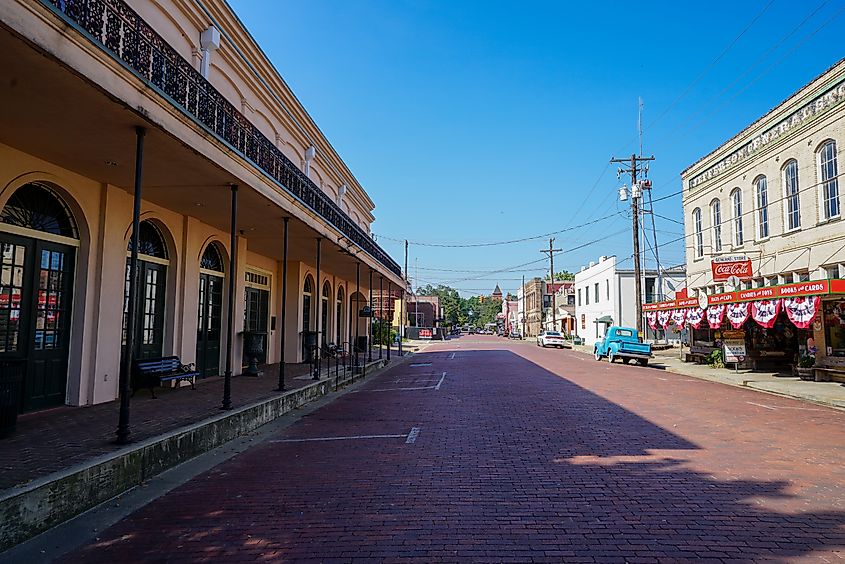
Jefferson, positioned in Marion County along Big Cypress Bayou, is one of the most historically rich towns in the state. In the mid-19th century, Jefferson was a thriving riverport, the sixth-largest city in Texas, thanks to its strategic location as the westernmost steamboat stop on the Red River. The town's prosperity during this era is still reflected in the well-preserved Victorian architecture that lines its streets. Jefferson is also known for its Jay Gould's Railroad Car and the legend of Diamond Bessie, a story of intrigue that continues to capture the public's imagination.
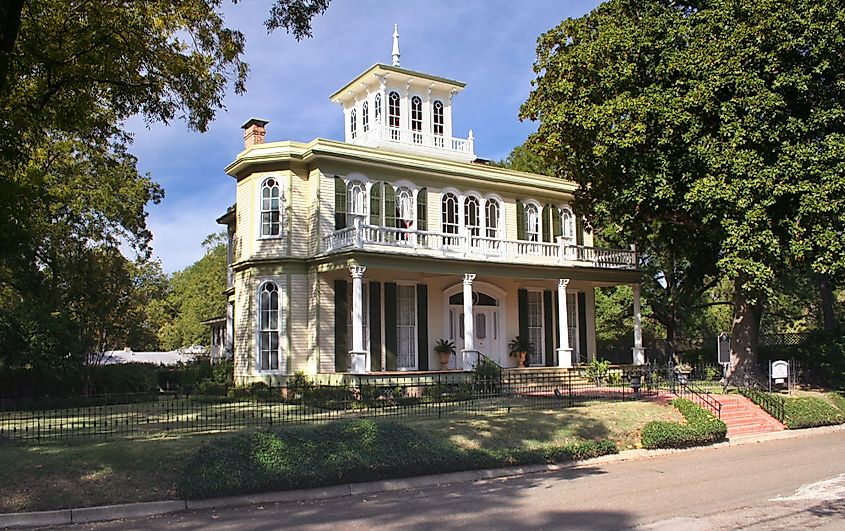
The Grove, a haunted 1861 historic home, offers guided tours that delve into local lore and ghost stories. For history enthusiasts, the Jefferson Historical Museum provides extensive displays on the Civil War, the steamboat era, and the Caddo Indians. Dining options include the Stillwater Inn, offering gourmet cuisine in a refined setting, and the Kitschy Black Swan Wine Bar, which provides a cozy atmosphere for evening relaxation. Outdoors, guests can enjoy leisurely boat tours on Big Cypress Bayou, offering a scenic and informative perspective of the town's natural and historical landscape.
Lockhart
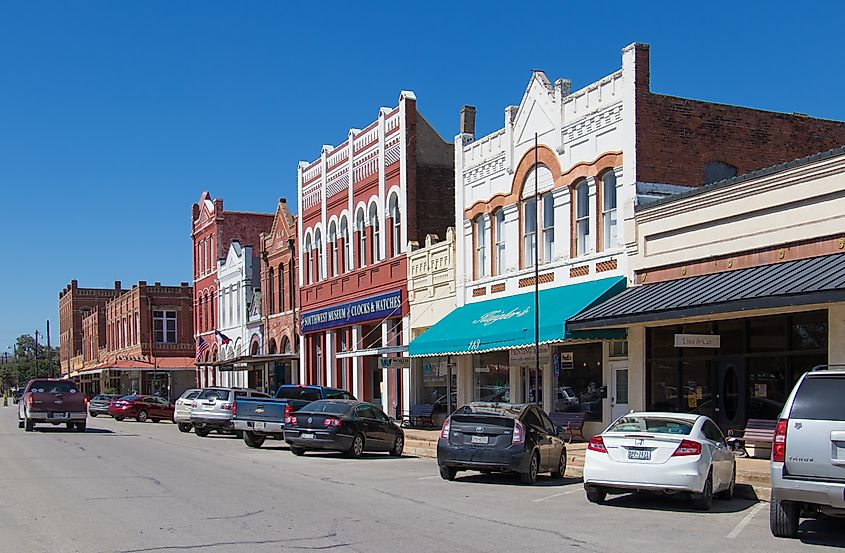
Lockhart is a historic town renowned for its rich heritage and status as the “Barbecue Capital of Texas.” Established in 1848, Lockhart became the county seat, boasting a stunning courthouse designed by Wesley Clark Dodson, which is one of the oldest operating courthouses in Texas. This town's history is deeply intertwined with the Chisholm Trail, pivotal for cattle driving in the 19th century, which contributed significantly to its development and cultural backdrop.
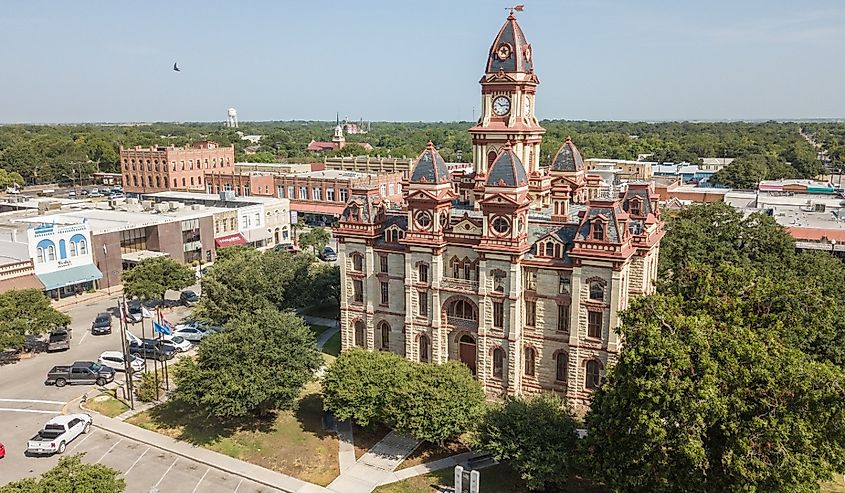
Visitors can explore the Caldwell County Jail Museum, which offers insights into the town's law and order from the late 1800s to the mid-20th century. For barbecue lovers, Lockhart is unmatched with establishments like Black’s Barbecue, which has been operated by the Black family since 1932, and Kreuz Market, offering traditional, wood-smoked meats since 1900. The town also features the Dr. Eugene Clark Library, the oldest continuously operating library in Texas, and the Gaslight Baker Theatre, providing live entertainment in a historic setting. For outdoor activities, the Lockhart State Park offers golfing, hiking, and a natural retreat within the scenic Texas Hill Country.
Granbury
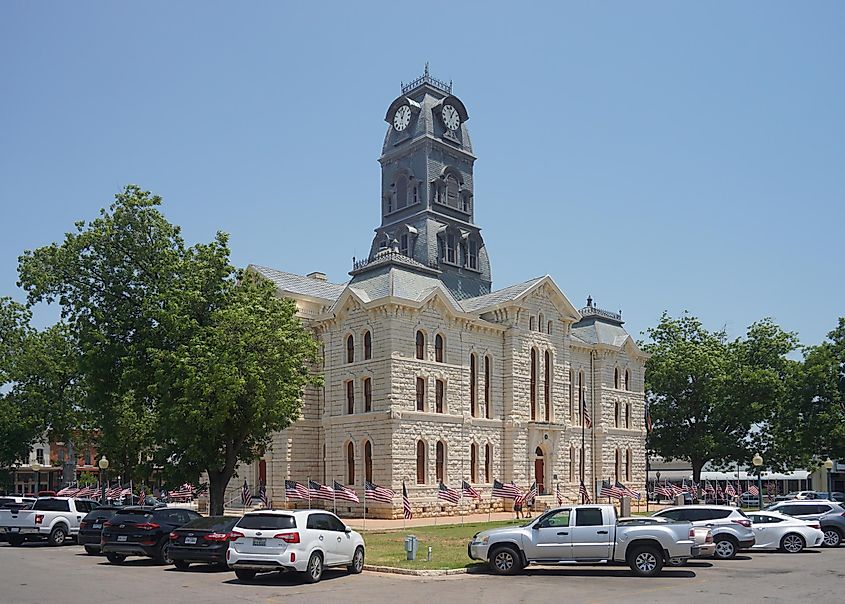
Granbury is marked by its well-preserved 19th-century architecture and town square, which is listed on the National Register of Historic Places. Founded in 1887, Granbury started as a square and log cabin courthouse. Many of the town’s original buildings still stand around the town square, which is dominated by the imposing Hood County Courthouse, built in 1890. An interesting fact about Granbury is that it claims to house the grave of the infamous outlaw Jesse James, contrary to popular history which states he was buried in Missouri.
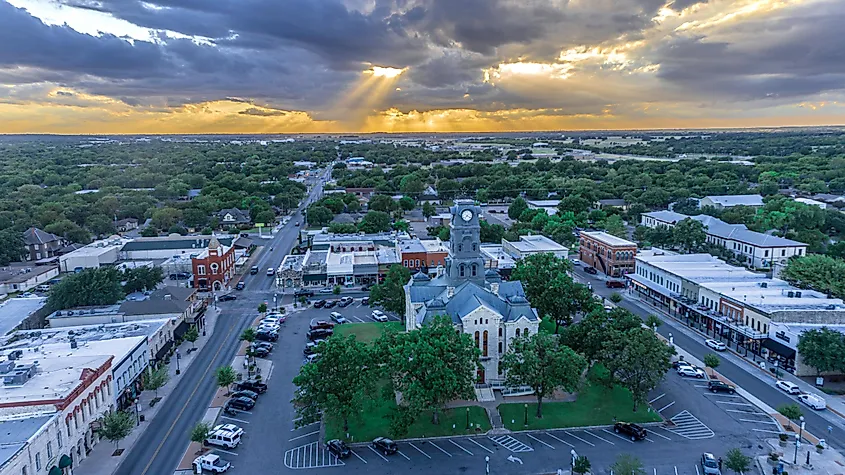
Granbury’s rich past is complemented by a variety of attractions that cater to history buffs and leisure seekers alike. The Granbury Opera House, established in the 1880s and fully restored in 1975, offers year-round performances, bringing a taste of Victorian culture to the modern age. For museum enthusiasts, the Hood County Jail Museum showcases artifacts and exhibits from the late 1800s. Dining options around the square include the Nutt House Historic Hotel's restaurant, which serves Southern cuisine in a building from 1893. For relaxation, visitors can stroll along Lake Granbury's beach, which features a public beach providing a scenic view of the historic town from the waterfront.
Hico
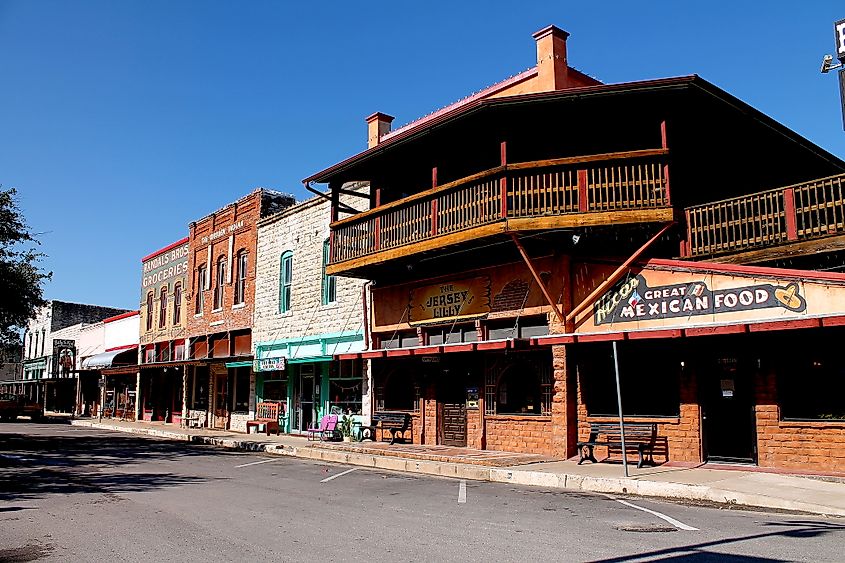
Hico, located at the intersection of Highways 281 and 6 in Hamilton County, epitomizes the classic historic Texas town with its deep-rooted connections to the Old West. Officially incorporated in 1883, Hico was a bustling center during the cattle drives of the late 19th century and later became known for a unique claim: it is said to be the final resting place of the notorious outlaw Billy the Kid, who allegedly lived out his days here under an assumed name. This claim is based on local lore that contrasts with the more widely accepted story of his death in New Mexico.
The town also features a variety of antique shops and boutiques, such as the Hico Mercantile and Wiseman House Chocolates, where handcrafted chocolates are made and sold in a charming historic building. For dining, the Koffee Kup Family Restaurant is a must-visit, known regionally for its home-style cooking and famous pies. Additionally, the annual Texas Steak Cookoff brings tourists and locals together for a celebration of Texan cuisine and community spirit in the historic downtown.
Castroville
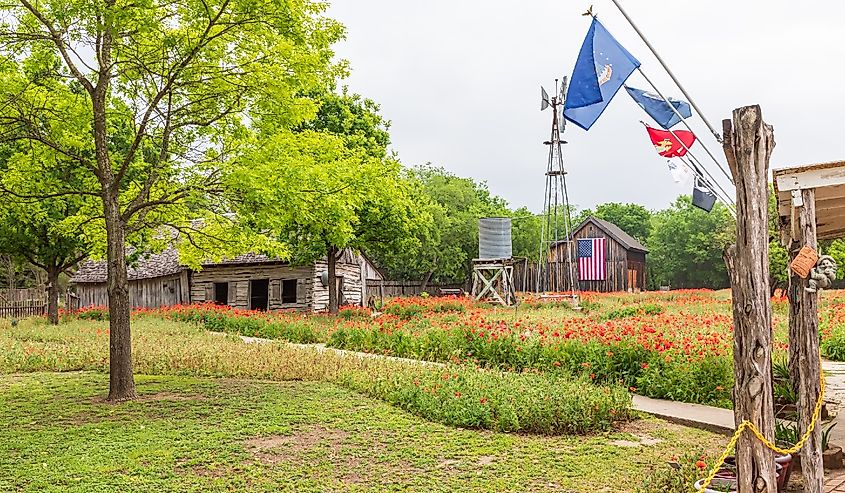
Castroville is distinctively known as the "Little Alsace of Texas." Founded in 1844 by Henri Castro and a group of Alsatian immigrants, Castroville retains a strong European heritage visible in its unique Alsatian-style architecture and historical sites. This rich history is encapsulated within the Landmark Inn State Historic Site, originally an 1850s inn and stagecoach stop, offering a glimpse into the early settler life through well-preserved buildings and artifacts.
In Castroville, the past and present merge beautifully, providing visitors with a variety of experiences. The Steinbach Haus Visitors Center, a restored Alsatian home originally built in the 1600s in France and relocated to Castroville in the 1990s, serves as a cultural emblem and tourist information center. For dining, the Castroville Café offers traditional Texan and Alsatian dishes, creating a culinary bridge between Texas and France. Outdoors, the Castroville Regional Park provides scenic walking trails and access to the Medina River, perfect for picnics and leisurely strolls. Moreover, the annual St. Louis Day Festival celebrates the town's Alsatian roots with authentic cuisine, music, and dance.
Wimberley
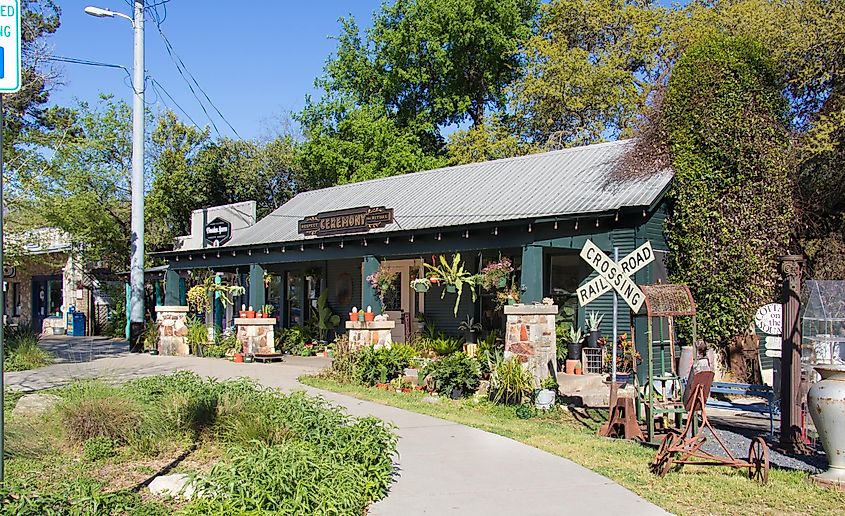
Wimberley was part of the expansive Fisher-Miller Land Grant in the mid-19th century. Initially a trading post settlement near Cypress Creek and the Blanco River, Wimberley has evolved while maintaining its historic charm and small-town feel. The town is named after Pleasant Wimberley, a settler who purchased land in the area in 1874, and his legacy continues to permeate the community.
Today, Wimberley is a vibrant hub for arts and culture, attracting visitors with its scenic landscapes and historic sites. The Wimberley Valley Museum offers insights into the town’s heritage, showcasing artifacts and exhibits that trace local history. For those seeking outdoor activities, Blue Hole Regional Park provides one of Texas' most beloved swimming holes, surrounded by lush parkland perfect for hiking and picnics. Jacob's Well Natural Area, another significant natural attraction, features an artesian spring that draws both casual visitors and geological enthusiasts. For dining, visitors can enjoy local flavors at The Leaning Pear, which offers hill country-inspired cuisine, or sip on artisanal brews at the Wimberley Cafe, known for its rustic setting and hearty meals.
Salado
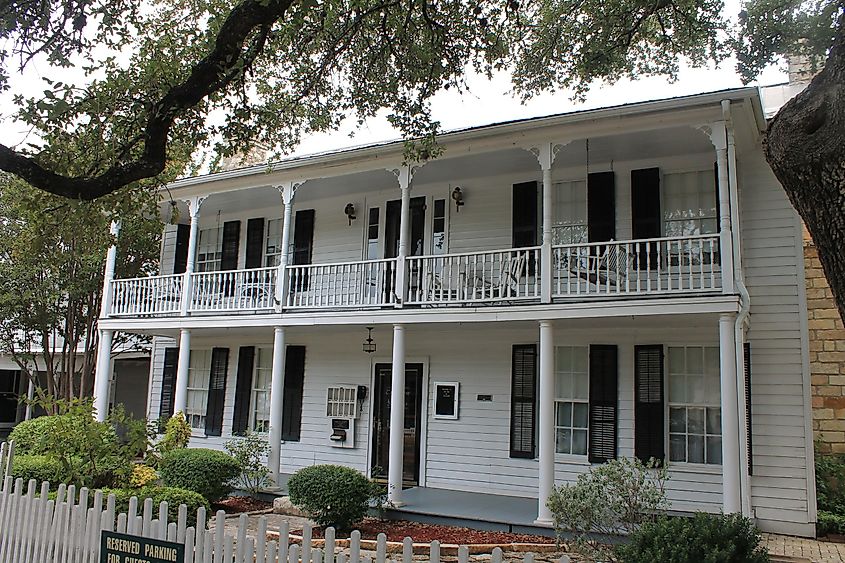
Salado is rich with history dating back to its founding in 1859. Originally established as a stagecoach stop, Salado quickly became a cultural and educational center of Texas due to the influential Salado College, which operated from 1860 until the 1880s. The town’s commitment to preserving its past is evident in the numerous well-preserved Victorian homes and buildings that line its streets. Salado is also known for its numerous art galleries and artisans, a tradition that harks back to its early days as a gathering place for thinkers and creators.
The Salado Museum and College Park, housed in a restored early 20th-century building, offers exhibits on local history, including Native American artifacts and items from the town's early educational institutions. For shopping and dining, the Salado Historic District provides a plethora of unique boutiques and eateries, such as Alexander’s Distillery, which is set in a renovated grain mill and serves upscale dishes and craft cocktails. Outdoors enthusiasts will enjoy Pace Park, which offers scenic views along Salado Creek, perfect for a leisurely walk or picnic. Additionally, annual events like the Scottish Gathering and Highland Games celebrate Salado’s diverse cultural heritage.
Fredericksburg
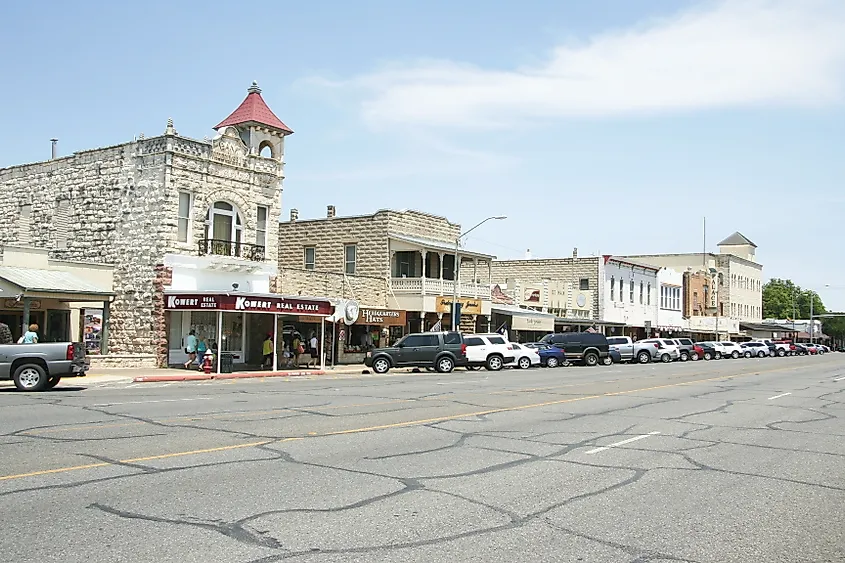
Fredericksburg was founded in 1846 by German immigrants. This rich cultural background is prominently reflected in the town's architecture, festivals, and daily life. Fredericksburg is known for its historic Main Street, where many buildings dating back to the 19th century have been meticulously preserved and still in use today. The town was named after Prince Frederick of Prussia, and its unique history includes the "Society for the Protection of German Immigrants in Texas," which aimed to establish a new Germany within Texas.
The National Museum of the Pacific War, located on Main Street, offers extensive exhibits dedicated to World War II in the Pacific, which is tied to local son Admiral Chester Nimitz. For those interested in the local history and immigrant culture, the Pioneer Museum showcases artifacts and stories of the early settlers. Dining options include the Ausländer Restaurant and Biergarten, which provides authentic German cuisine and a wide selection of beers. For leisure, the Enchanted Rock State Natural Area offers hiking and breathtaking views of the Texas Hill Country.
Gruene
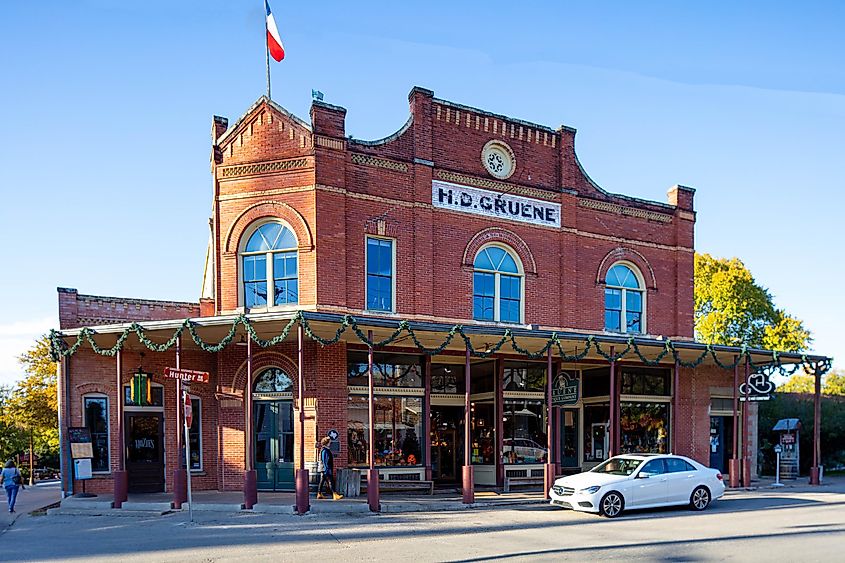
Gruene serves as a vivid portal to the past with its origins dating back to the mid-19th century. Originally founded by German settlers in 1845, Gruene was developed as a cotton farming community, and by the early 1900s, it boasted one of the largest cotton gins in the region, powered by the Guadalupe River. The town's name, pronounced "Green," is derived from its founder, Ernst Gruene. This historic district maintains a rustic charm with many of its original buildings now repurposed as shops, restaurants, and venues while preserving their late 19th and early 20th-century architectural styles.
Tourists can experience Texas history firsthand at Gruene Hall, built in 1878 and recognized as the oldest continually operating dance hall in Texas, where live music fills the air daily. The Gruene General Store, another historical establishment, offers old-fashioned goods and treats. Dining at the Gristmill River Restaurant & Bar provides a scenic view of the Guadalupe River alongside hearty Texas cuisine in an atmosphere encapsulating the rustic elegance of the town's storied past. Additionally, the annual Gruene Music & Wine Fest celebrates local artists and vintners, further enhancing the town’s historic and cultural appeal.
Exploring Texas' historic towns offers a deep dive into the state's rich past, from Jefferson's Victorian architecture to Granbury's claim to Jesse James, each town offers a unique window into the heritage and evolution of the Lone Star State.











